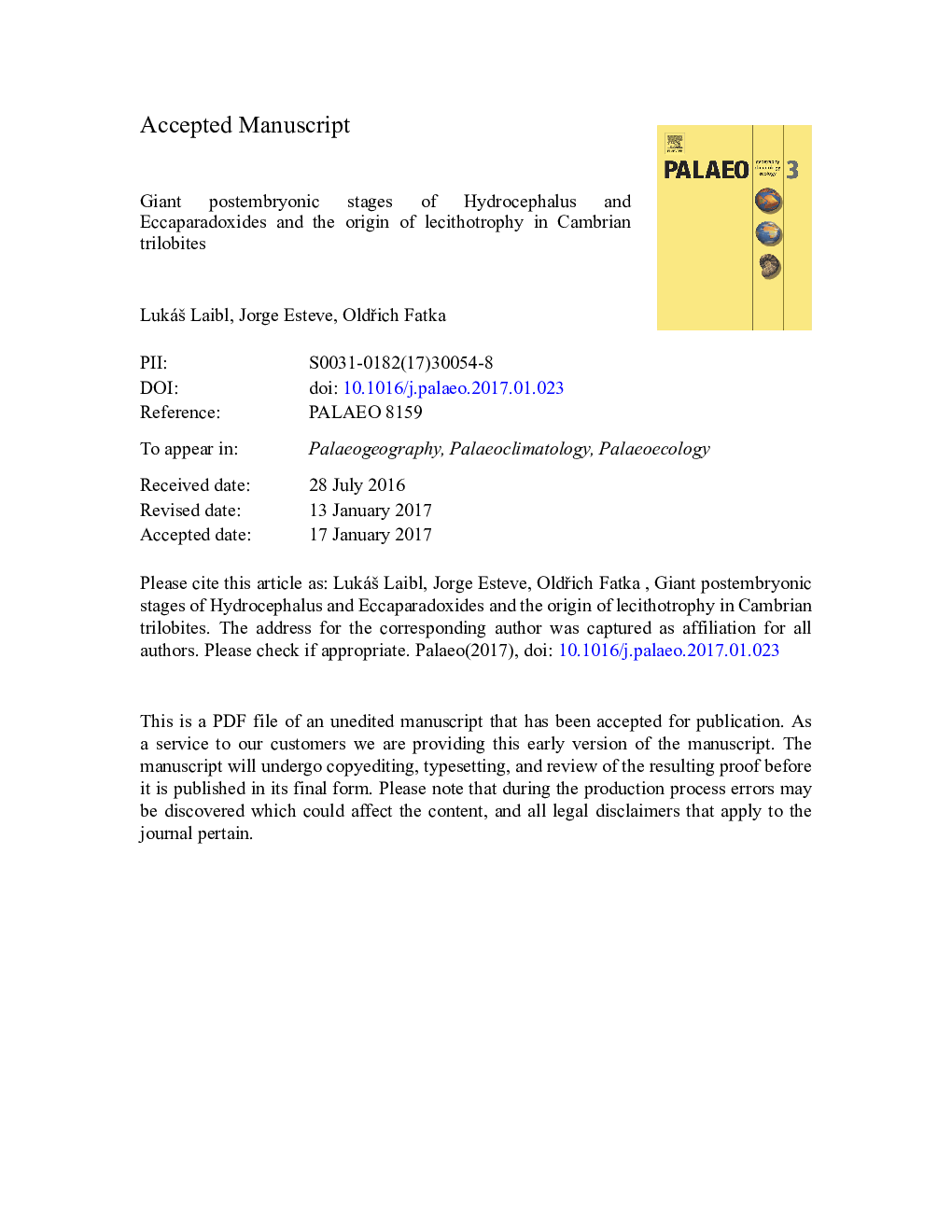| Article ID | Journal | Published Year | Pages | File Type |
|---|---|---|---|---|
| 5755914 | Palaeogeography, Palaeoclimatology, Palaeoecology | 2017 | 25 Pages |
Abstract
The early postembryonic stages of the Cambrian paradoxidid trilobites Hydrocephalus carens and Eccaparadoxides pusillus show an extraordinary morphology, which is characterised by an inflated glabella and reduced fixigenae. Moreover, the earliest known instars of both taxa are significantly larger than postembryonic instars of most of other Cambrian trilobites. Based on the size and morphology, we suggest that H. carens possessed a lecithotrophic type of development. This hypothesis is supported by growth patterns, accelerated development and frequency of distribution of H. carens. Lecithotrophic development is also proposed for E. pusillus, although the data are less convincing in this case. Analysis of early postembryonic instars of other Cambrian trilobites shows a correlation between their size and palaeogeographic distribution. The appearance of the largest postembryonic instars, including H. carens and E. pusillus, correlates with higher latitudes along the West Gondwanan margin. The specific environment in this area associated with unpredictable production of planktonic food is probably responsible for evolution of lecithotrophic development in these trilobite taxa.
Related Topics
Physical Sciences and Engineering
Earth and Planetary Sciences
Earth-Surface Processes
Authors
LukáÅ¡ Laibl, Jorge Esteve, OldÅich Fatka,
